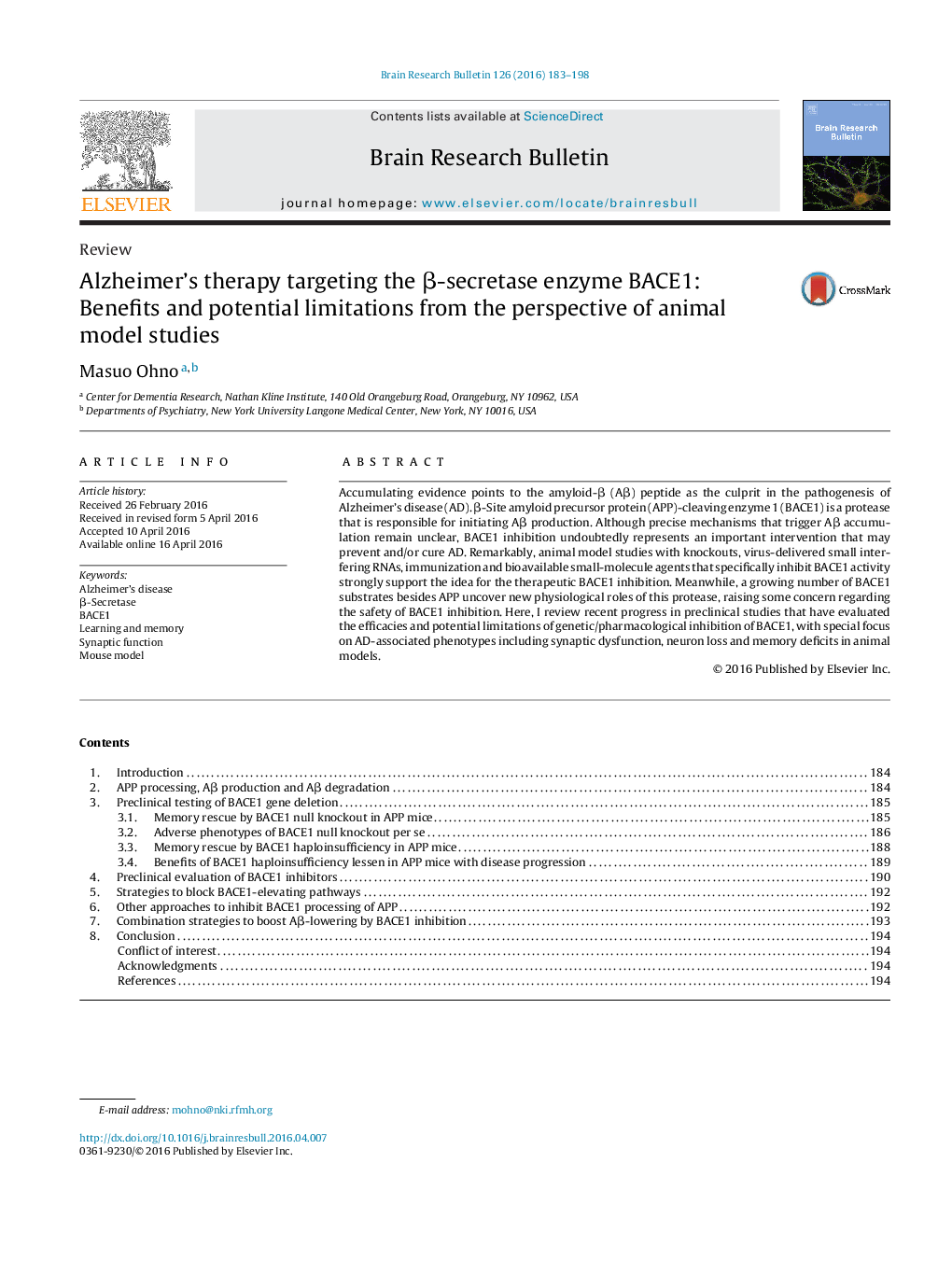| Article ID | Journal | Published Year | Pages | File Type |
|---|---|---|---|---|
| 4318601 | Brain Research Bulletin | 2016 | 16 Pages |
•BACE1 knockout mice provide a useful model to test therapeutic β-secretase inhibition.•BACE1−/− mice show adverse phenotypes in line with a growing list of BACE1 substrates.•Inhibitors, immunization and siRNAs specific for BACE1 activities are tested in vivo.•Benefits of BACE1 inhibition in APP mice decrease with disease progression.•Combination approaches may be useful for boosting efficacies of BACE1 inhibition.
Accumulating evidence points to the amyloid-β (Aβ) peptide as the culprit in the pathogenesis of Alzheimer’s disease (AD). β-Site amyloid precursor protein (APP)-cleaving enzyme 1 (BACE1) is a protease that is responsible for initiating Aβ production. Although precise mechanisms that trigger Aβ accumulation remain unclear, BACE1 inhibition undoubtedly represents an important intervention that may prevent and/or cure AD. Remarkably, animal model studies with knockouts, virus-delivered small interfering RNAs, immunization and bioavailable small-molecule agents that specifically inhibit BACE1 activity strongly support the idea for the therapeutic BACE1 inhibition. Meanwhile, a growing number of BACE1 substrates besides APP uncover new physiological roles of this protease, raising some concern regarding the safety of BACE1 inhibition. Here, I review recent progress in preclinical studies that have evaluated the efficacies and potential limitations of genetic/pharmacological inhibition of BACE1, with special focus on AD-associated phenotypes including synaptic dysfunction, neuron loss and memory deficits in animal models.
